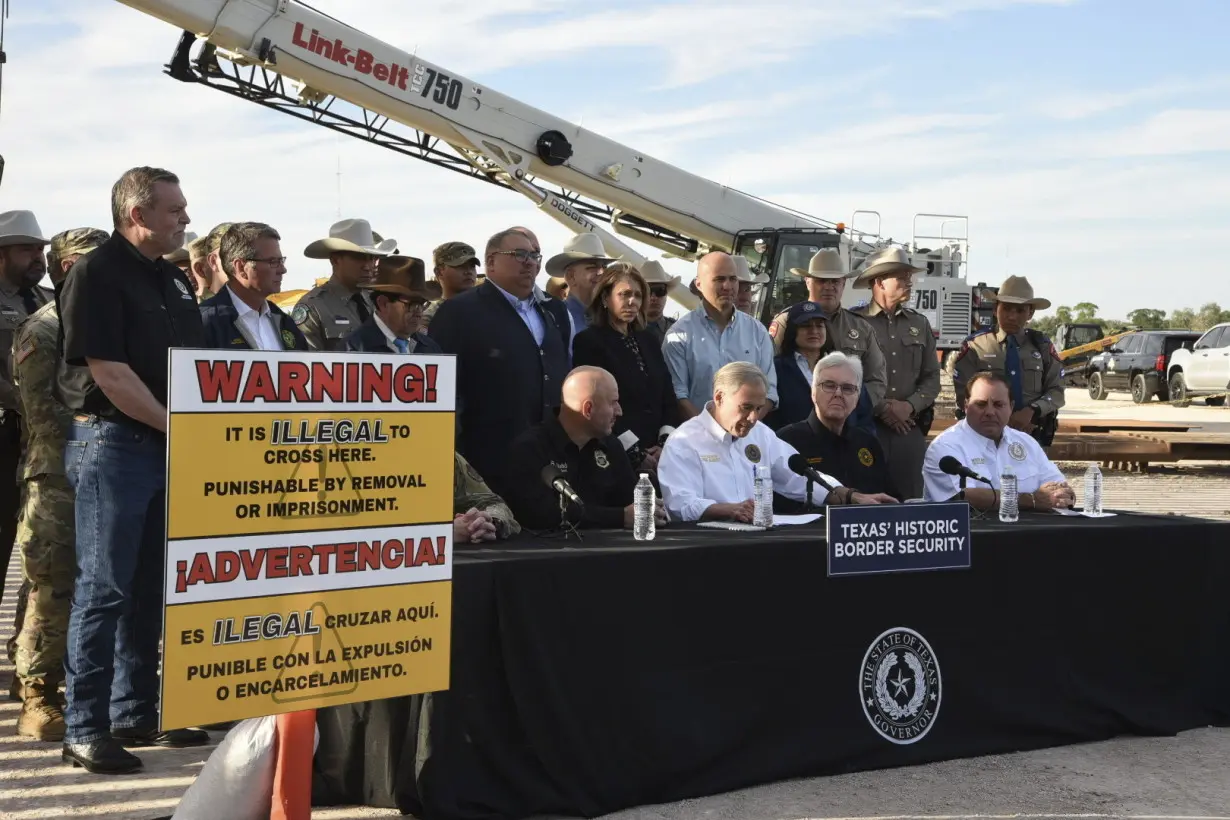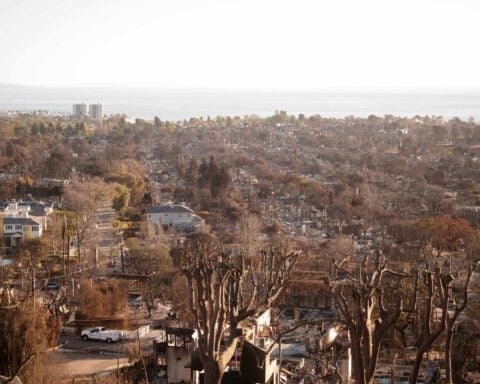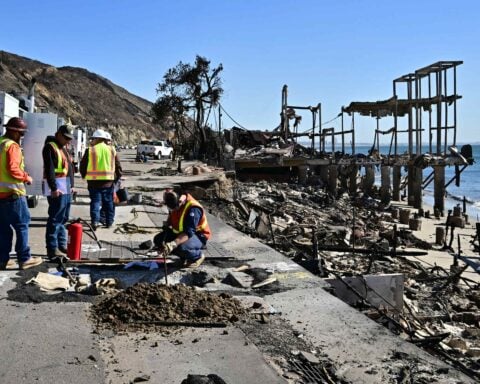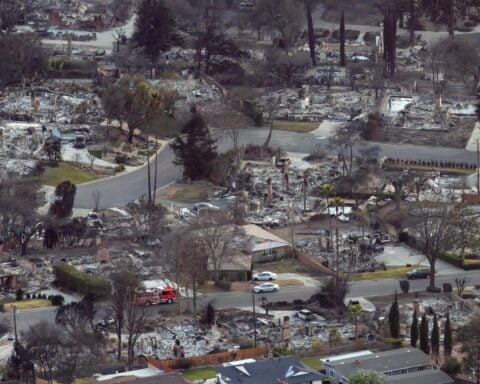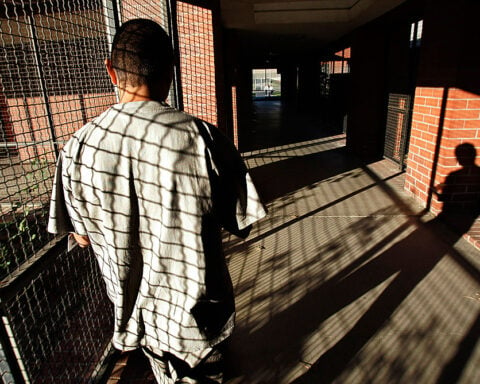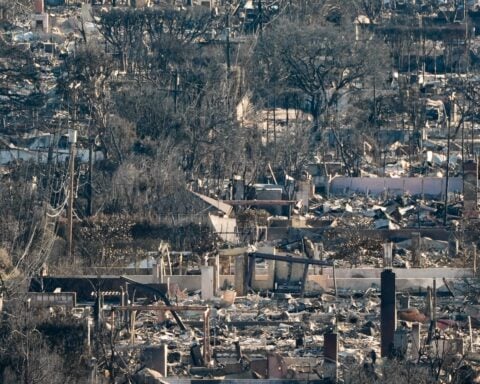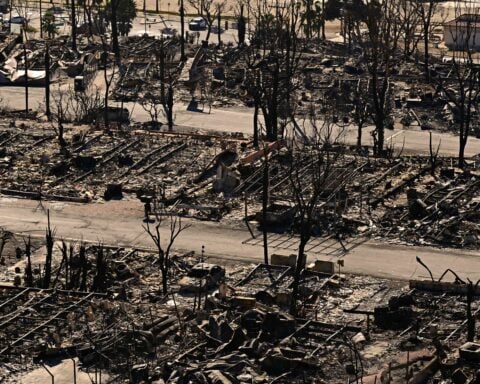McALLEN, Texas (AP) — How far can a state go to keep migrants out of the U.S.?
The answer may soon come out of Texas, where a new law signed by Republican Gov. Greg Abbott this week will allow police to arrest migrants who cross the U.S.-Mexico border illegally and give local judges the authority to order them to leave the country.
Acting quickly, civil rights groups and a Texas border county filed a lawsuit Tuesday that seeks to stop the measure from taking effect in March, calling it unconstitutional. White House press secretary Karine Jean-Pierre also blasted the Texas law but wouldn’t say whether the Justice Department would challenge it.
Here are some things to know:
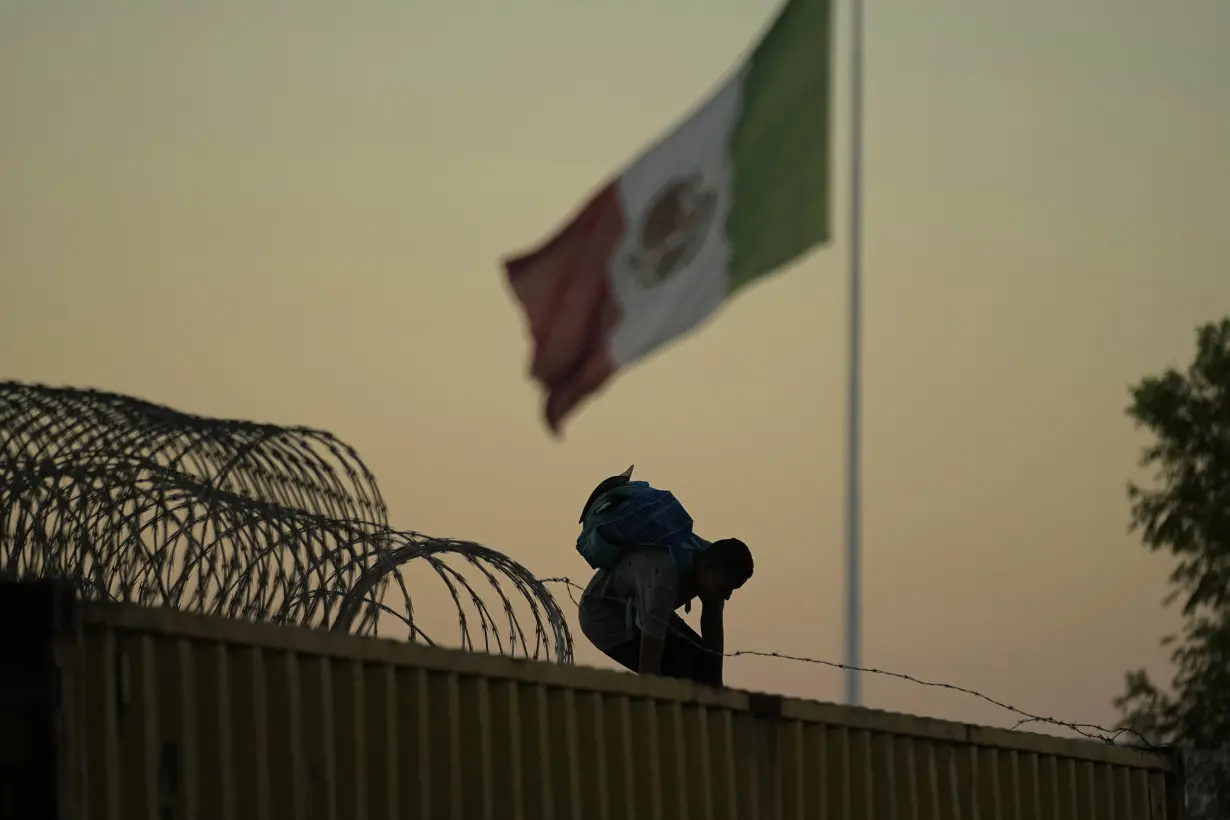
The measure allows any Texas law enforcement officer to arrest people who are suspected of entering the country illegally. Once in custody, migrants could either agree to a Texas judge’s order to leave the U.S. or be prosecuted on misdemeanor charges of illegal entry. Migrants who don’t leave could face arrest again under more serious felony charges.
Arresting officers must have probable cause, which could include witnessing the illegal entry themselves or seeing it on video.
The law cannot be enforced against people lawfully present in the U.S., including those who were granted asylum or who are enrolled in the Deferred Action for Childhood Arrivals program.
“The goal of these laws is to make sure that when they see somebody crossing over the border, as the National Guard see, as the Texas Department of Public Safety see, they know they’re not profiling. They are seeing with their own eyes people who are violating the law,” Abbott said Monday.
However, critics, including Mexico President Andrés Manuel López Obrador, worry the law could lead to racial profiling and family separation. American Civil Liberties Union affiliates in Texas and some neighboring states issued a travel advisory this week warning people of a possible threat their civil and constitutional rights violations when passing through Texas.
During a news briefing Tuesday, López Obrador said Abbott was looking to score political points with people’s lives.
“The Texas governor acts that way because he wants to be the Republican vice-presidential candidate and wants to win popularity with these measures,” López Obrador said. “He’s not going to win anything. On the contrary, he is going to lose support because there are a lot of Mexicans in Texas, a lot of migrants.”
It can be enforced anywhere in Texas.
Republican state Rep. David Spiller, who carried the bill in the Texas House, says he expects the vast majority of arrests will occur within 50 miles (80 kilometers) of the U.S.-Mexico border.
Some places are off-limits. Arrests can't be made in public and private schools; churches, synagogues or other established places of worship; hospitals and other health care facilities, including those where sexual assault forensic examinations are conducted.
Under the Texas law, migrants ordered to leave would be sent to ports of entry along the border with Mexico, even if they are not Mexican citizens.
Legal experts and immigrant rights group have said the measure is a clear conflict with the U.S. government’s authority to regulate immigration.
A key claim in Tuesday's lawsuit filed by the ACLU and other groups is that it violates the U.S. Constitution's supremacy clause. The suit accuses Texas of trying “to create a new state system to regulate immigration that completely bypasses and conflicts with the federal system.”
Opponents have called the measure the most dramatic attempt by a state to police immigration since a 2010 Arizona law — denounced by critics as the “Show Me Your Papers” bill — that was largely struck down by the U.S. Supreme Court. The court's 2012 decision on the Arizona law stated the federal government has exclusive power over immigration.
Abbott and other Republicans have said President Joe Biden is not doing enough to control the 1,950-mile (3,149-kilometer) southern border.
“In his absence, Texas has the constitutional authority to secure our border through historic laws like SB 4,” Abbott said in a statement.
The U.S. government has not said whether it will challenge the Texas law, as it did with Arizona's measure.
Mexico's president has indicated his country will intervene.
Abbott signed the law Monday amid an increase in border crossings that has stretched U.S. Customs and Border Protection resources. Troy Miller, the agency's acting commissioner, has called the number of daily arrivals “unprecedented,” with illegal crossings topping 10,000 some days across the border in December.
Thousands of asylum-seekers who have crossed are sleeping outside along the border overnight as they wait for federal agents to process them. Most are released with notices to appear in immigration courts, which are backlogged with more than 3 million cases.
Many are crossing at the Texas cities of Eagle Pass and El Paso, where federal officials suspended cross-border rail traffic in response to migrants riding freight trains through Mexico, hopping off just before entering the U.S.
The U.S. government also recently shut down the nearby international crossing between Lukeville, Arizona, and Sonoyta, Mexico, to free Customs and Border Protection officers assigned to the port of entry to help with transportation and other support. The agency also has partially closed a few other border ports of entry in recent months, including a pedestrian crossing in San Diego.
___
Associated Press writers Acacia Coronado and Paul Weber in Austin, Texas; Christopher Sherman in Mexico City; and Zeke Miller in Washington, D.C., contributed to this report.

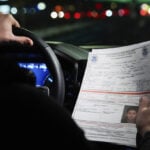 Immigrants in Chicago and other US cities brace for expected Trump deportation arrests
Immigrants in Chicago and other US cities brace for expected Trump deportation arrests
 US VP-elect Vance meets with Chinese counterpart ahead of inauguration
US VP-elect Vance meets with Chinese counterpart ahead of inauguration
 Nigerian gasoline tanker explosion death toll rises to 86, with 55 others injured
Nigerian gasoline tanker explosion death toll rises to 86, with 55 others injured
 Cheers and weeping as Israelis watch Gaza hostages return
Cheers and weeping as Israelis watch Gaza hostages return
 A quick TikTok video changed everything for a restaurant
A quick TikTok video changed everything for a restaurant
 Economic grievances fuel support for hostile actions, Edelman global survey shows
Economic grievances fuel support for hostile actions, Edelman global survey shows
 NL Rookie of the Year Paul Skenes isn't ready to think about the long term in Pittsburgh
NL Rookie of the Year Paul Skenes isn't ready to think about the long term in Pittsburgh
 Ravens superfan embarks on spiritual quest to Buffalo in honor of late brother
Ravens superfan embarks on spiritual quest to Buffalo in honor of late brother
